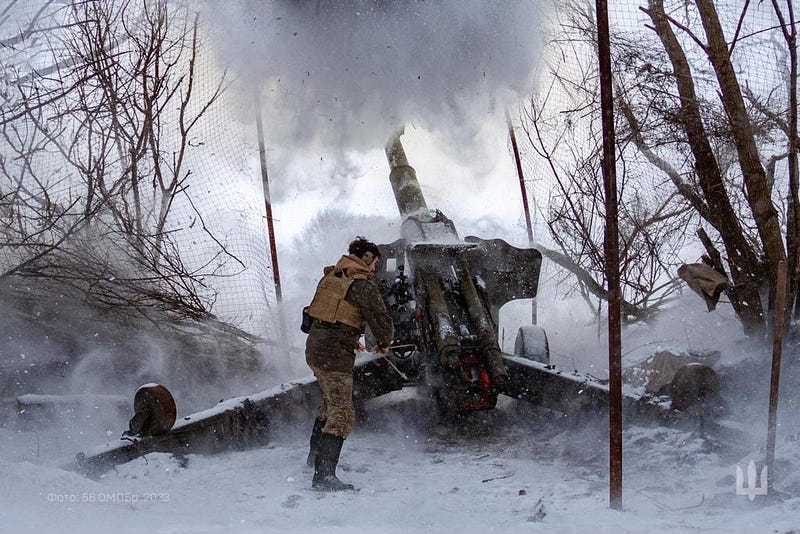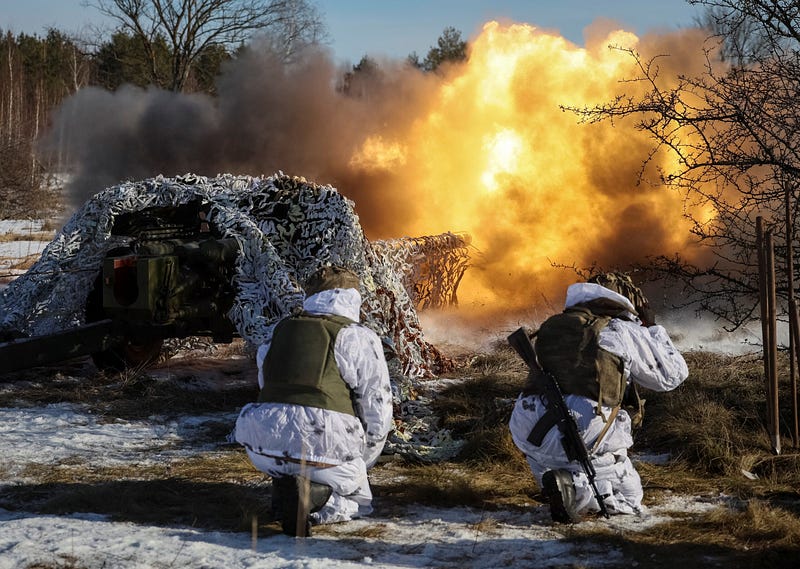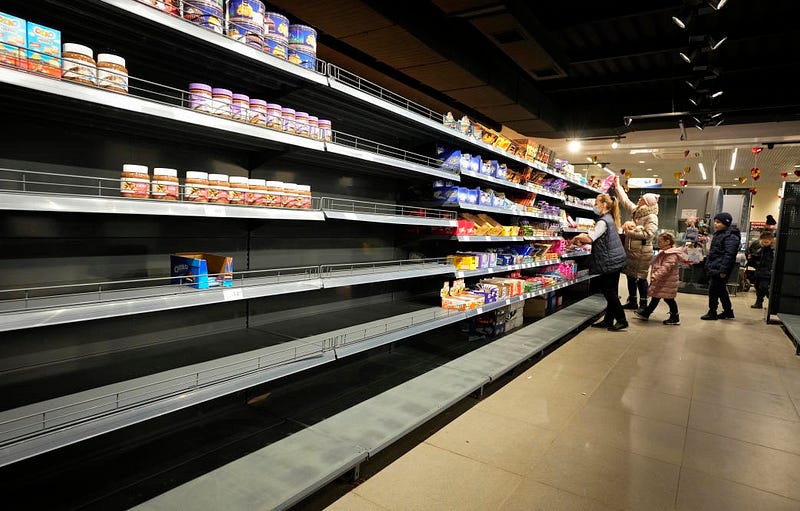The Staggering Toll of Russia’s War in Ukraine and Putin’s Hidden Crisis!

The war in Ukraine, a stark reminder of the grim realities of modern conflict, has entered a new phase of ferocity. Recent figures released by Kyiv’s military paint a harrowing picture of the toll this prolonged engagement has exacted on Russian forces. Since February 3, more than 4,500 Russian soldiers have fallen, according to Ukraine’s count. This stark tally underscores not only the human cost but also the significant materiel losses suffered by the Kremlin’s forces, including 42 tanks, 103 armored fighting vehicles, 104 artillery systems, and 36 drones, all within a remarkably short timeframe.
The scale of the conflict, as depicted by Ukraine, is monumental. Since President Vladimir Putin ordered the invasion on February 24, 2022, Russia is said to have suffered the loss of 393,290 troops. The hardware losses are equally staggering, with 6,385 tanks, 11,921 armored fighting vehicles, and 7,209 drones reported destroyed or incapacitated. These numbers, while difficult to independently verify, highlight the relentless intensity and the heavy toll of the conflict. The opacity surrounding Russian casualty figures – rarely disclosed and widely regarded as understated – only adds to the fog of war that envelops this tragic confrontation.
Recent updates from Ukraine’s military spotlight the incessant violence along the front lines. Over a single day, Ukrainian forces engaged in 91 combat clashes, countering 49 Russian airstrikes and 52 assaults executed with multiple-launch rocket systems. This intensity of combat operations is indicative of a conflict far from any prospect of de-escalation. The Ukrainian Armed Forces’ targeted operations against Russian personnel clusters, command points, and ammunition storage underscore a strategic approach to undermining the adversary’s capacity to sustain its offensive.
A quick heads-up: Medium’s been tweaking its algorithms and it’s getting trickier for my stories to land in your feed. So, if you enjoy my work, please make some noise! Hit that clap button, light up the highlights, or drop a comment. Every interaction helps keep the stories flowing. Thanks for your support!
The resilience of Ukrainian forces is evident in their success in repelling Russian advances across several critical fronts. Near Zolota Nyva in the southeast and along the Lyman front to the east, Ukrainian defenders have stymied Russian efforts to gain ground. Similarly, in the southern Zaporizhzhia region, multiple Russian attacks have been successfully rebuffed. This steadfast defense is a testament to the determination and tactical acumen of Ukraine’s military, even as the conflict’s dynamics continue to evolve.

Independent assessments, such as those from the Institute for the Study of War (ISW), provide further insights into the shifting battle lines. Despite Russian forces achieving marginal gains in certain areas, Ukrainian troops have not only held their ground but also made advances, particularly southwest of Donetsk city. The ongoing battles around Avdiivka, an eastern industrial village, epitomize the war’s brutal nature. With reports of Russian advances into the northern parts of Avdiivka, the conflict continues to inflict devastating impacts on both the military and civilian spheres.
In this relentless conflict, the formidable Russian military-industrial complex faces a paradox of strength and vulnerability. Despite possessing one of the world’s most extensive arsenals and a vast array of military hardware, Russia confronts a critical bottleneck: the scarcity of high-end components essential for modern warfare. The crux of the issue lies in the acquisition of specialized equipment, such as German military-grade laser targeting sights for tanks and custom-made microchips for drones. While mundane microchips might be procurable through intermediary states, securing advanced military technology has proven to be an insurmountable challenge for Moscow. This technological shortfall not only undermines the effectiveness of Russian forces but also highlights the complex interdependencies of global military supply chains.
The prognosis for the Ukraine-Russia conflict is grim, with expectations of a protracted engagement spanning the entirety of the year. Russia’s strategy appears to hinge on a war of attrition, aiming to overwhelm Ukrainian defenses through sheer force. However, this approach is expected to exact a heavy toll on Russia’s premier combat units. In a calculus where the loss of materiel is weighed against human lives, Russian military doctrine seemingly accepts the expendability of soldiers, a stark reminder of the brutal pragmatism at play. The anticipated result is a pyrrhic endeavor, with Russian forces engaging in relentless offensives that, while depleting Ukrainian ammunition stocks, yield little strategic gain and inflict significant personnel losses on both sides.

The battlefield dynamics are further complicated by the evolving role of unmanned aerial systems (UAS), where both adversaries are rapidly advancing their capabilities. Ukraine, however, benefits from a critical edge in this domain – access to Western technology and expertise. This infusion of Western technology not only enhances the sophistication of Ukrainian drones but also signifies a broader trend of technological and strategic realignment in the region. The pivotal role of these state-of-the-art systems cannot be understated, as they have the potential to reshape the operational landscape, offering Ukraine a significant advantage in surveillance, targeting, and engagement.
Yet, this technological ascendancy hangs in a precarious balance. The relentless Russian offensive, characterized by wave upon wave of attacks, is strategically designed to exhaust Ukrainian ammunition supplies. This tactic, while primitive, is grounded in a cold calculation: to force a breach in Ukrainian defenses before the arrival of the next tranche of Western aid. The timing is crucial; the Kremlin is acutely aware that the momentum could shift decisively against it once Ukraine begins local production of weapons and receives further Western military support. The stakes of this high-stakes gambit are nothing less than the control of the frontline and, by extension, the course of the war itself.
The evolving geopolitical landscape harbors profound implications for Russia, particularly in the context of its ongoing conflict in Ukraine. A critical juncture may arise if China, amidst its own economic tumult predicted to culminate in a crash with over $7 trillion in losses, decides to restrict Russia’s access to its banking system. Such a move would not only sever Russia from the vital conduits of the international financial system but also complicate its ability to monetize its natural resources on the global stage. This potential financial isolation, compounded by China’s economic freefall, poses a stark challenge to Russia’s economic stability and strategic autonomy.

The food security dimension further exacerbates Russia’s vulnerabilities. A significant dependency on China for food supplies introduces a critical point of failure in ensuring domestic well-being. This reliance becomes particularly precarious against the backdrop of potential economic sanctions or supply chain disruptions, underscoring the fragility of Russia’s position in maintaining the basic sustenance of its population.
In the United States, the political dynamics surrounding the potential re-election of Donald Trump may not yield the shift in U.S.-Russia relations some might speculate. The structural safeguards of American democracy, including its checks and balances, are designed to temper the volatility of foreign policy shifts. This mechanism ensures that irrespective of the administration, the U.S. stance towards Russia, especially regarding the Ukraine conflict, is likely to remain consistent, presenting a stable front of opposition to Moscow’s ambitions.
Europe’s strategic recalibration represents another significant counterweight to Russian advances. The concerted effort to establish a robust European defense capability, led by France and Germany, signals a departure from the continent’s previous reliance on diplomatic and economic measures. This evolution, alongside Germany’s pivot towards a militarized industrial complex, reflects a broader continental awakening to the imperatives of security and sovereignty. Such developments not only challenge Russia’s military objectives but also herald the emergence of a more assertive European posture in the global security landscape.
These scenarios collectively signal a complex array of challenges for Russia. The specter of financial isolation, economic vulnerabilities, unwavering opposition from the West, and the strategic consolidation of European military capabilities delineates a daunting landscape for Moscow. This constellation of factors, spanning the financial, economic, political, and military realms, suggests a strategic impasse for Russia, diminishing the feasibility of a unilateral victory in Ukraine. The interplay of these dimensions underscores the intricate and interconnected nature of contemporary geopolitical conflicts, where the outcomes are shaped not only by the force of arms but also by the dynamics of international finance, supply chain resilience, and the strategic will of the global community.





